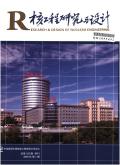Numerical Investigation of the Obstacle on Hydrogen Distribution in a Vessel
引用次数: 0
Abstract
Hydrogen combustion and explosion is an important safety issue in nuclear power plants (NPPs) containment during postulated severe accidents or in utilization of hydrogen. It is significant to understand the hydrogen flow and distribution in space for mitigating hydrogen risk. In this paper, a numerical model to investigate hydrogen flow and distribution in a vessel is established using computational fluid dynamics (CFD) code GASFLOW. Hydrogen is simulated by helium which is used to study the hydrogen distribution. The k-ε turbulent model is selected to establish the numerical model, and the numerical model which has no obstacle inside the vessel or includes the obstacle inside is verified under medium momentum conditions of injected gas by comparing numerical results with experimental data. Regardless of the presence of the obstacle in the vessel, helium stratification occurs under all momentum condition of injected gas. When the obstacle is present, it blocks the flow path of the injected helium to the upper space, then the helium volume concentration in upper space is lower than the condition that there is no obstacle in the vessel. As the initial Froude number increases from 0.19 to 19.29, the flow mechanism around the obstacle under high momentum condition of injected gas is different from that under medium or low momentum conditions. Consequently, the boundary of the helium stratification moves down, and the distribution of helium looks more uniform in most area of the vessel for high momentum conditions of injected gas.容器内氢气分布障碍的数值研究
氢的燃烧与爆炸是核电厂在重大事故或氢利用过程中的一个重要安全问题。了解氢气在太空中的流动和分布对降低氢气风险具有重要意义。本文利用计算流体力学(CFD)程序GASFLOW建立了研究氢气在容器内流动和分布的数值模型。用氦气模拟氢气,研究氢气的分布。选取k-ε湍流模型建立数值模型,并通过数值结果与实验数据的对比,在注入气体中等动量条件下,验证了容器内无障碍物或包含障碍物的数值模型。无论容器中是否存在障碍物,在注入气体的所有动量条件下都会发生氦分层。当障碍物存在时,它阻断了注入氦气向上层空间的流动路径,此时上层空间的氦气体积浓度低于容器内没有障碍物的情况。随着初始弗劳德数从0.19增加到19.29,注入气体在高动量条件下绕障流动机理与中、低动量条件下不同。因此,在注入气体的高动量条件下,氦气分层边界下移,氦气在容器大部分区域的分布看起来更加均匀。
本文章由计算机程序翻译,如有差异,请以英文原文为准。
求助全文
约1分钟内获得全文
求助全文

 求助内容:
求助内容: 应助结果提醒方式:
应助结果提醒方式:


